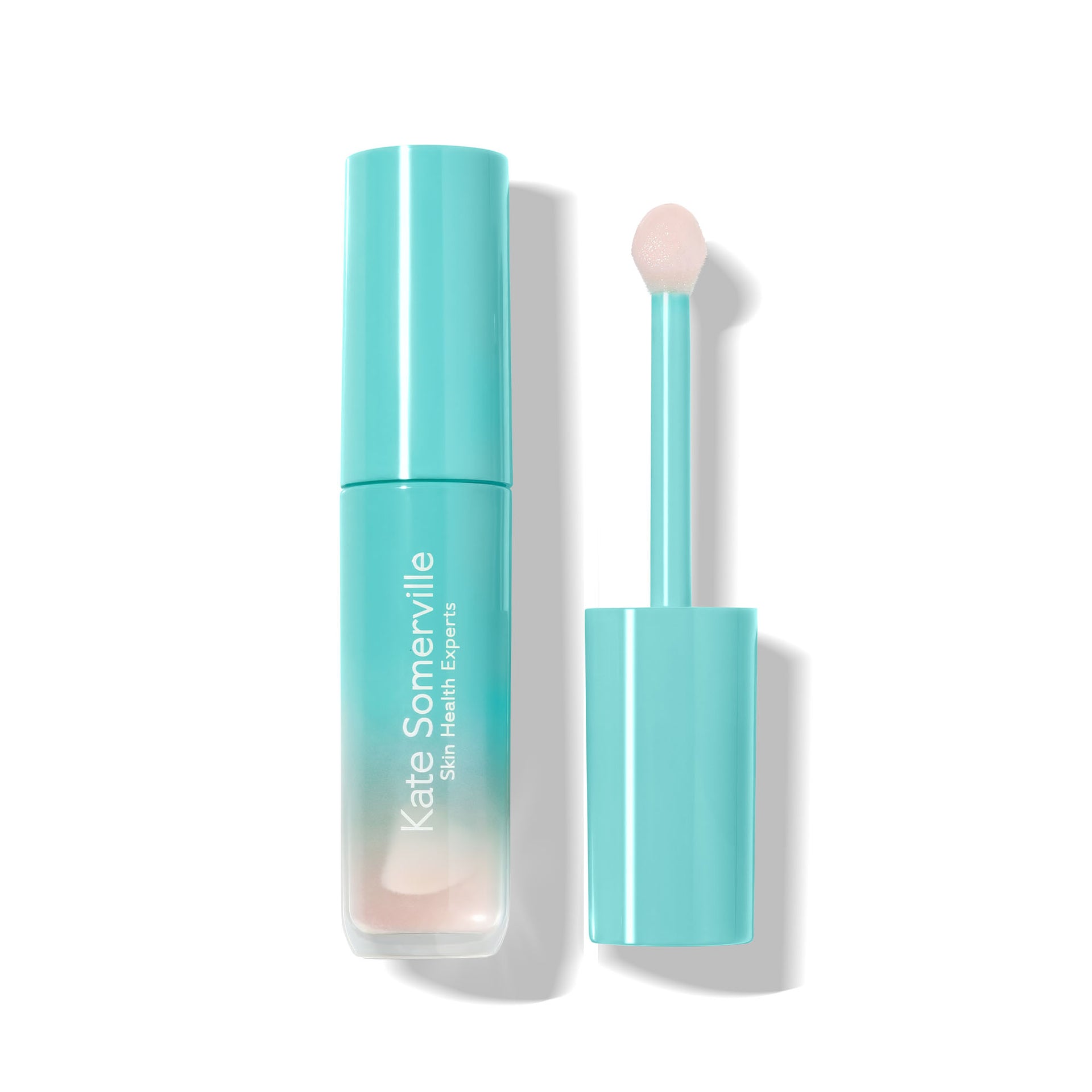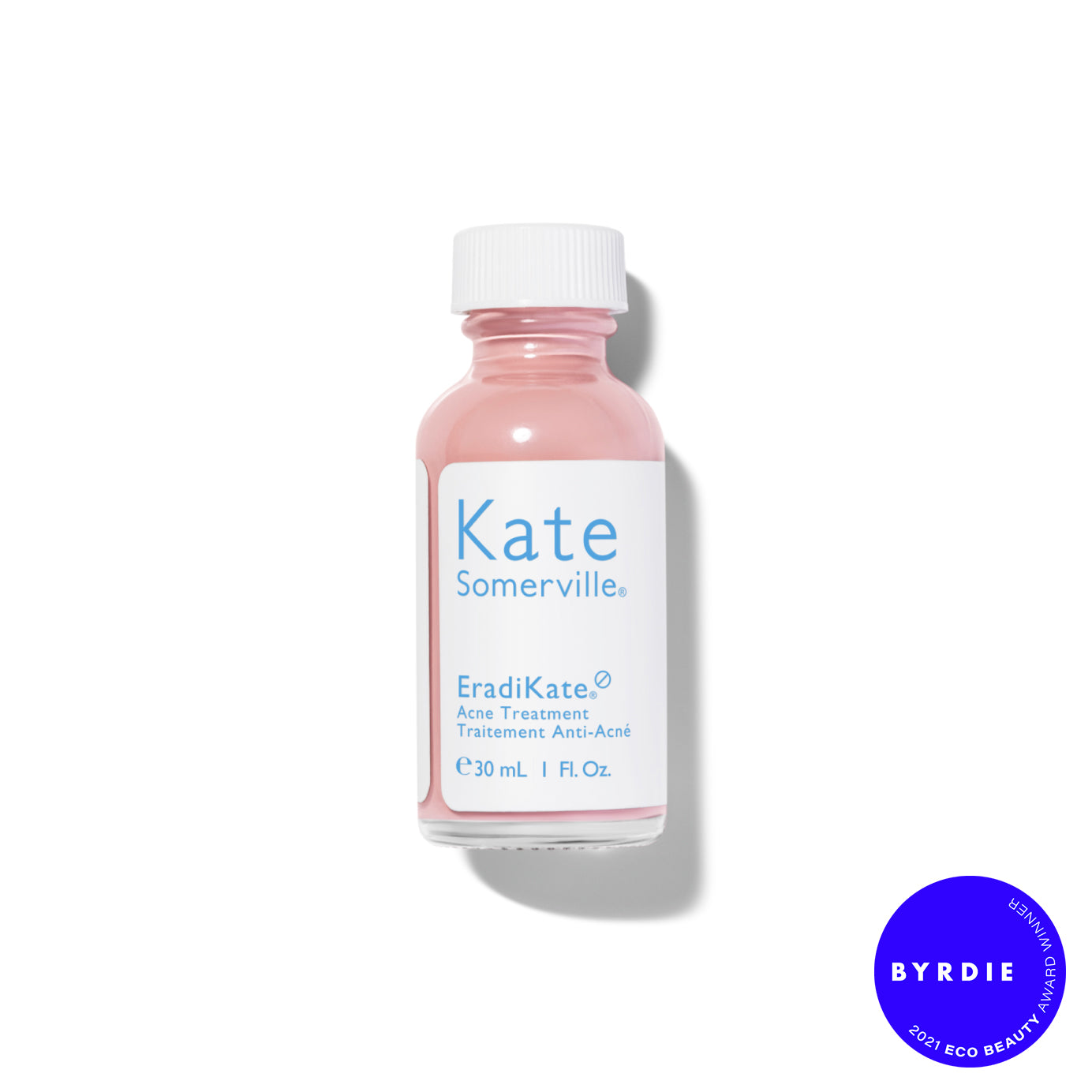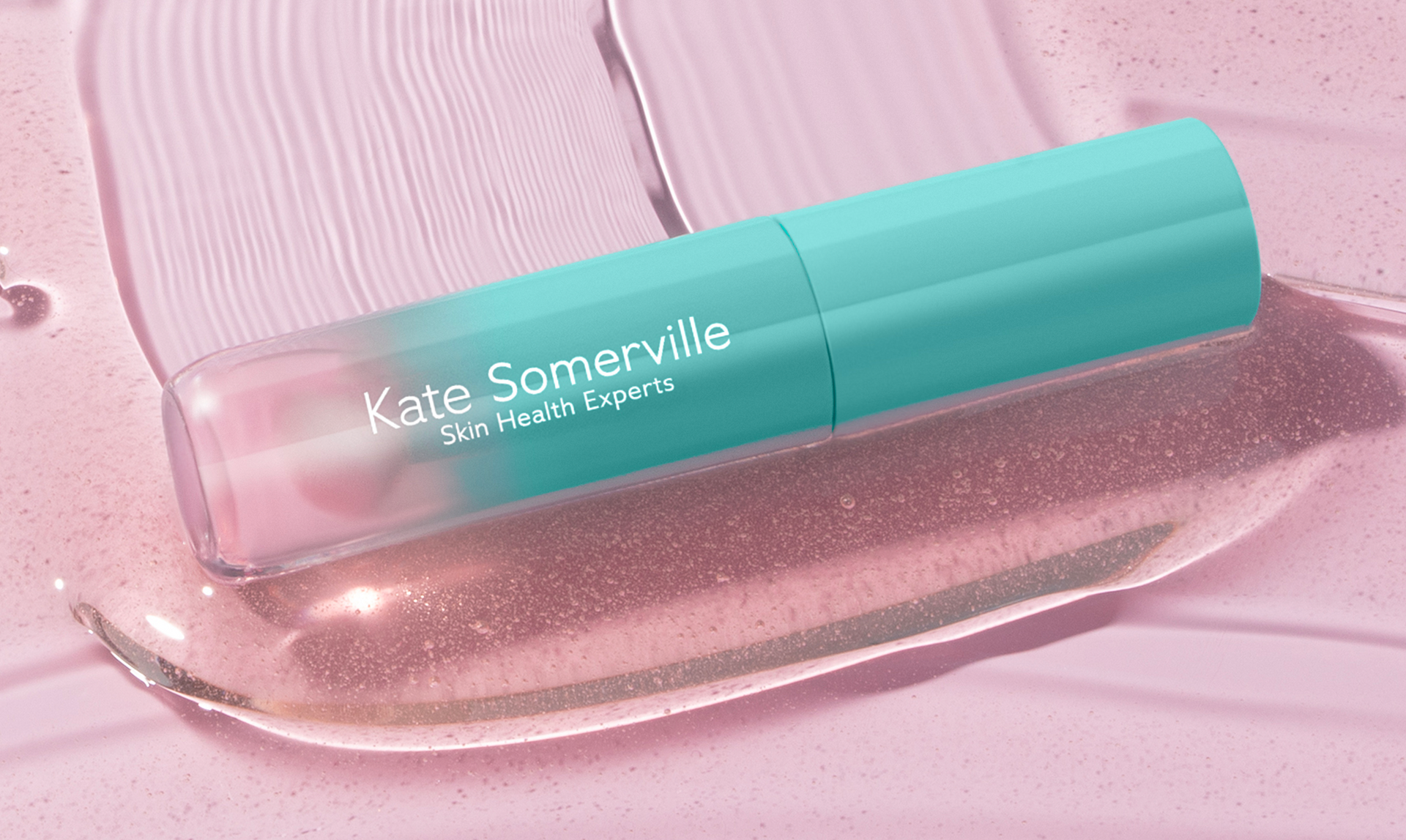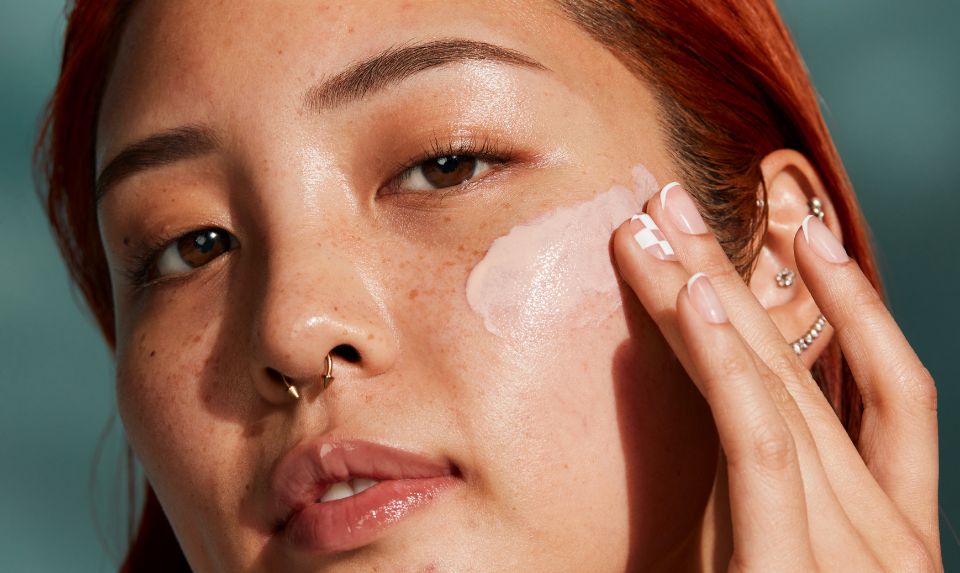This blog was updated on January 10th, 2022.
When it comes to acne products, you have a lot of options - so many, in fact, that it can be confusing to find the best product or ingredients for your acne-prone skin. Fortunately, you can wade through some of the chaos by looking for products that contain ingredients approved by the United States Food and Drug Administration (FDA). FDA-approved acne treatment ingredients and the percentages of these active ingredients generally signal that these are safe skin care products. However, it is important to recognize that the FDA does not certify or approve products as a whole [1], only the active ingredients within them. Esthetician Michelle Freese is one of our beloved and trusted Kate Somerville Skin Experts at our Melrose Place clinic in Hollywood, and is incredibly familiar with these FDA-approved skincare ingredients [2]. Below, Michelle breaks down some of the most common topical skincare ingredients for us.
Benzoyl Peroxide
One of the most effective ingredients for clearing bacteria within the pore, a common cause of acne, benzoyl peroxide works by introducing oxygen into the pore [3]. Because bacteria cannot live in an oxygen-rich environment, the population is reduced, which in turn reduces the number of acne breakouts on the skin. Benzoyl peroxide is also effective in keeping pores clean and preventing future breakouts as it clears most debris from the pore.
As an ingredient, benzoyl peroxide can be an effective treatment for mild to moderate acne. When you initially begin treating acne with this ingredient, look for a product labeled around 2.5% strength. While stronger products are available, they may irritate the skin and create more problems than they fix. You can also increase the product strength if you do not see results or your skin becomes adapted to what you have used over a longer period of time.
When using a product containing benzoyl peroxide, it is important to closely follow any instructions provided to help avoid any unwanted side effects. Most of these products will require that you apply a thin layer of product over the entire face. Keep in mind that this ingredient may bleach hair, towels, and clothing, so avoid these materials during and immediately after application until the product dries. As for side effects, the most common is skin dryness and flaking where the product was applied, though these effects are usually mild and can be addressed by applying an oil-free moisturizer daily. However, some may experience more severe dryness, flaking, redness, or even burning when using benzoyl peroxide products.
If you’re looking for an effective acne-fighting ingredient that contains Benzoyl Peroxide, look no further than the Kate Somerville Anti Bac™ Acne Clearing Lotion. Kate’s expertly formulated 5% Benzoyl Peroxide acne treatment lotion reduces acne flare-ups without aggravating or over drying skin. The intensive acne formula targets pores to help clear existing acne, minimize excess oil and eliminate blackheads.
Sulfur
You most likely remember sulfur for its distinctive smell, sometimes compared to that of rotten eggs, but sulfur is actually one of the oldest known acne treatments and is completely natural [4]. Don’t worry though, these products don’t usually have the recognizable odor. Sulfur is an effective acne treatment for a few reasons. First, sulfur causes the skin to dry out and peel off. This helps to slough away dead skin cells and prevent pore blockages. Secondly, sulfur helps absorb oil on the skin’s surface which, again, helps reduce clogged pores. Finally, sulfur helps keep acne-causing bacteria at bay.
Typically, sulfur products are most effective in treating mild to moderate acne or preventing future breakouts. It can also be a great ingredient for those with sensitive skin or who are allergic to other ingredients like benzoyl peroxide [5]. While prescription-strength sulfur products are available, most over-the-counter products are sufficient to help achieve clear skin. The types of sulfur products range from soaps and cleansers to lotions, masks, or spot treatments leaving you with lots of options to incorporate sulfur into your routine. Our EradiKate® Sulfur Acne Treatment has 10% sulfur, the highest level approved by the FDA, for a superior outcome. This acne spot treatment has been clinically proven to diminish a breakout in as little as one hour.
Unfortunately, drying, peeling, itching, and redness are common side effects experienced by those who choose to use sulfur products. The effects tend to be worst when you first start treatment but do persist over time. Some products may also still have a slightly unpleasant odor, especially all-natural brands, which can deter some from using them.
Salicylic Acid
A popular ingredient in many over-the-counter acne products and treatments, salicylic acid is ideal for treating non-inflamed breakouts and blackheads. While it is naturally occurring in white willow bark and wintergreen, most of the salicylic acid used today is synthetic. It works by breaking up dead skin cells and clearing them away from the surface of the skin. It is especially effective in penetrating the pore to clear it of most debris that would otherwise clog the pores. In addition, it helps to reduce oily skin.
Products containing salicylic acid come in a variety of forms including cleansers, toners, medicated pads, creams, and lotions and are most effective in treating mild acne breakouts and blackheads. Over-the-counter products typically range in strength from .5% to 2% while prescription strength products or peels can reach strengths of twenty to thirty percent. Professional treatments utilizing that level of salicylic acid can be effective in treating moderate to more severe acne as they mechanical exfoliation reaches more deeply than over-the-counter products. EradiKate™ Clarifying Acne Gel Cleanser has 1% salicylic acid alongside a prebiotic complex to cleanse and clear skin while also restoring a healthy microbiome. Our EradiKate™ Acne Mark Fading Gel has 2% salicylic acid, a prebiotic complex, and niacinamide to prevent breakouts and fade post-acne marks in just 3 days. Finally, Kate’s EradiKate® Salicylic Acid Acne Treatment contains 2% salicylic acid and can be used as an all-over lightweight overnight lotion to clear acne while smoothing skin texture.
Fortunately, most people experience mild or even no side effects when using salicylic acid products. For those who do suffer from side effects, the most common complaints include dryness, peeling, and flaking which can be addressed by using an oil-free moisturizer daily. In rare cases, salicylic acid can cause stinging, burning, and skin irritation especially when it is being used in conjunction with other anti-acne products like retinol or benzoyl peroxide, so be sure to monitor your reaction when combining various active ingredients.
Types of Acne
As a whole, acne is the result of clogged pores, though what causes the blockage can vary. The underlying cause of acne may be attributed to excess oil, bacteria, hormonal imbalances, dead skin cells, and ingrown hairs. Given the different causes, it follows that there are a variety of ways acne can manifest and present itself on the skin. Each type of acne will require a different treatment [6] to resolve the issue so it is important to understand the acne you have and to recognize that acne is not mutually exclusive, meaning you may have more than one type. The varieties of acne include:
Blackheads
A type of non-inflammatory acne, blackheads are open comedones and the result of pores clogged by excess oil and dead skin cells. They are characterized by the black color seen on the surface of the skin, a direct result of the pore staying open despite it being clogged.
Whiteheads
Also known as closed comedones, whiteheads are the second type of non-inflammatory acne. Unlike blackheads, whiteheads are a clogged pore which is closed on the surface of the skin and will appear as a bump. These are typically harder to treat because the pore is closed, making it harder for products to penetrate and treat the clog.
Papules
The first of our inflammatory acne, papules occur when the walls of the pores break down due to severe inflammation. The result is hard, clogged pores which are painful when touched.
Pustules
Similar to papules, pustules also occur when the walls of the pores break down but in addition, the pore is filled with pus. The skin surrounding the acne is usually red in color and will often have yellow or white tops.
Nodules
The result of clogged and swollen pores, nodules are similar to the above except that they occur deeper beneath the skin’s surface and typically cannot be treated at home.
Cysts
Some of the hardest acne to treat, cysts develop when pores are clogged by clogged by a combination of bacteria, sebum, and dead skin cells and are even deeper under the skin than nodules. The resulting large red or white bumps are often painful to the touch and is the most severe form of acne [7].
How to Choose the Right Product
When it comes to finding the best acne treatment for you and your skin, there are a number of things to consider. First, you will need to think about your skin type, especially if you have sensitive skin that may react to stronger ingredients. Then consider the type of acne you have and its severity. The product that works best for mild inflammatory acne will not be the same as the product that is effective in treating moderate cystic acne. If you truly are not sure where to start and are unable to visit an esthetician, dermatologist, or another professional, Michelle recommends you “try one acne medication, product, or ingredient and then move on to the next.” The trial and error process should help you figure out what works best for your skin and gives you the best results.
Sources:
1. https://www.fda.gov/Cosmetics/ProductsIngredients/Ingredients/ucm2016770.htm
2. https://www.fda.gov/downloads/drugs/guidances/ucm259744.pdf
3. http://www.dermatologyandskinsurgerycenter.com/acne-treatment/do-your-acne-products-have-the-right-stuff
4. http://www.rsc.org/periodic-table/element/16/sulfur
5. https://www.healthline.com/health/beauty-skin-care/sulfur-for-acne#safe-for-all-skin-types
6. https://www.aad.org/public/diseases/acne-and-rosacea/how-to-treat-different-types-of-acne
7. https://www.aad.org/public/diseases/acne-and-rosacea/severe-acne



















